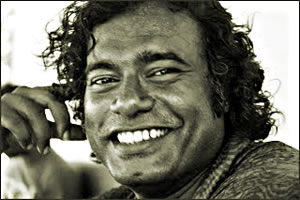Ignoring the glamour and allurement of ‘historical’ touristy destinations, reminiscing about a humble ancestral home that once was and continues to be an inspiration and part of her silent reveries, Sushma Sabnis walks through a golden weave of distant memories from her childhood.
When you are a child, even a bungalow with three rooms seems palatial and that is how I saw my grandmother’s home in Bangalore. Born and raised in Mumbai, the rare luxury of more than two rooms seemed like a boon and the possibilities of living in ‘that’ one extra room were more attractive than the single bedroom kiosks we call ‘homes’ in an ever-shrinking metro. Add to this palace a huge terrace, a patio, and large space surrounding the house with medicinal plants, vegetables, fruits, aromatic flowering plants and old trees which stood like green sentinels at a fort gate – aged and relentlessly observant.
To many, Bangalore brings in imageries of flower gardens and bakeries, though the landscape has mutated rapidly over the past few decades, the green cover has remarkably diminished and bakeries are far and few with the advent of bullying mall culture. The innumerable ‘tourist spots’ like Cubbon park, Lalbaug, the ancient city of Vijayanagara, Hampi ruins, Nandi hills, Mysore palace and many historically significant places have become mere embellishments for tourists’ catalogues and work more as tourism aiding devices than culture marques.
For me Bangalore represents one specific place, ‘2722, Ratnakar’. A postal address which no longer exists but there was a time when you could just say these words to the auto-rickshaw and you would be delivered safe and sound to the correct place. ‘2722’ was the house number and ‘Ratnakar’ was my grandfather’s name, he was a musician, a painter, a theatre actor and a textile designer.
This ‘palace’ is very important for me because I spent most of my summer holidays in an environment being one with nature, art and the quintessential activities which most people deem mundane, but seen from a more historical perspective, they form the fine silken threads of our cultural heritage. When one takes a journey to see new places, specifically to break the tedium of an urban lifestyle, one often looks for unheard of places. New beaches, new temples, new mountains, newly excavated ruins, though all of these ‘new’ places are actually ancient according to their carbonic birth dates, the urban thinking anoints them as ‘not-explored yet’ hence ‘new’. Perhaps, the newness is brought on by the generous sprinkling of resorts, beach view, valley view, river view, forest view, palace view, boulder view..you name it, they have the view!
‘2722 Ratnakar’ was all of the above. There was no river, but a water tank with enough water for the family, there was no mountain but the walls were strongly rooted to weather storms, terrace high enough to view sun rises, there were no beaches, but the coconut tree leaves shaded half the terrace and gardens. They say the walls of an old house imbibe the nature of its inhabitants. 2722 Ratnakar did just that. Though I never met my grandfather, 2722 Ratnakar perhaps subtly activated some creative genes in me. No one left empty handed or empty hearted from this house.
Every summer holiday of mine was spent in this house. I learnt to draw and paint there, developed an interest in music, science and nature there, learnt new languages, and developed taste buds for different cuisines which the kitchen created daily. Most of all I learnt to trust in the silent and powerful, creative nature of life.
Pickling was an art my grandmother excelled at; carefully handpicked mangoes, limes, gooseberries and unconventional like carrots, peppers, gingers gave themselves up willingly to become immortal under her nimble coercing fingers. Pickling, an art of prolonging the life of a food item to cater to the short term memory of taste buds, while preserving the fruit or vegetable from fungal fronds, beyond its seasonal occurrence and elevating them to an immortal status..yes, Ammama excelled at it.
I often wish there were some sort of pickling agents for bygone years and their ever enchanting juicy memories, perhaps one could revisit those tastes, moments and the quiet air which emanated a sense of inner peace.
‘2722 Ratnakar’ does not exist anymore on a google map or any map, it lives and flourishes only in my memory. I do visit it in early morning dreams, breathe in the aroma of Ammama’s delicious cooking intermingling with the rose bushes and jasmine intoxicants, touch the pregnant seed pods of the balsam plants, tickle the leaves of a shy mimosa, pluck some fruit and bite into it and let the experience consume me in its entirety.
Maybe in the future, when technology creates a successfully working time machine, you would find me sitting and painting on the terrace of 2722 Ratnakar, shaded by those gently swaying leaves of the grand old green sentinels.




